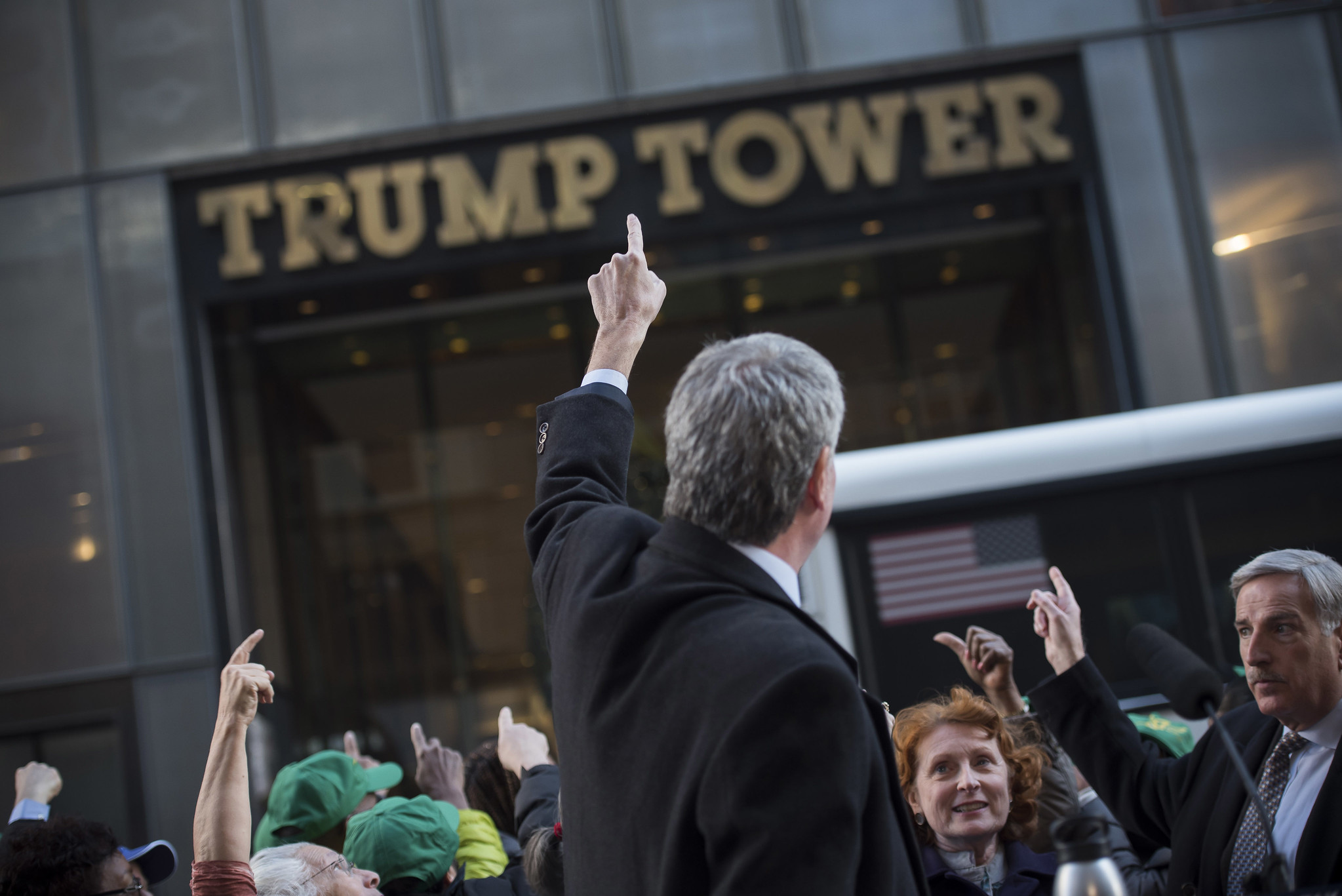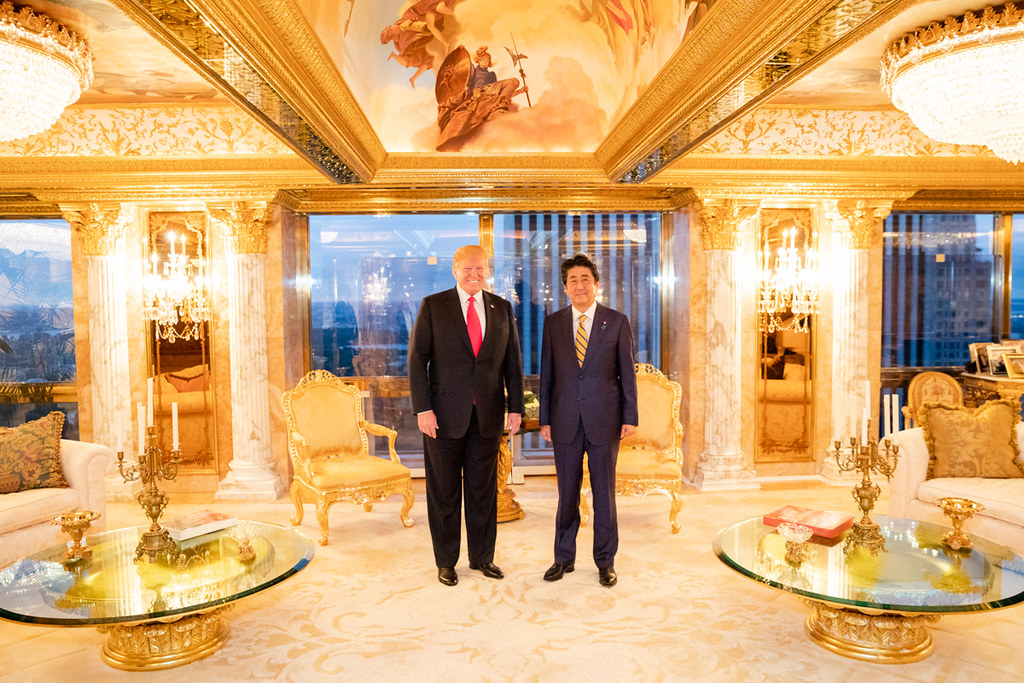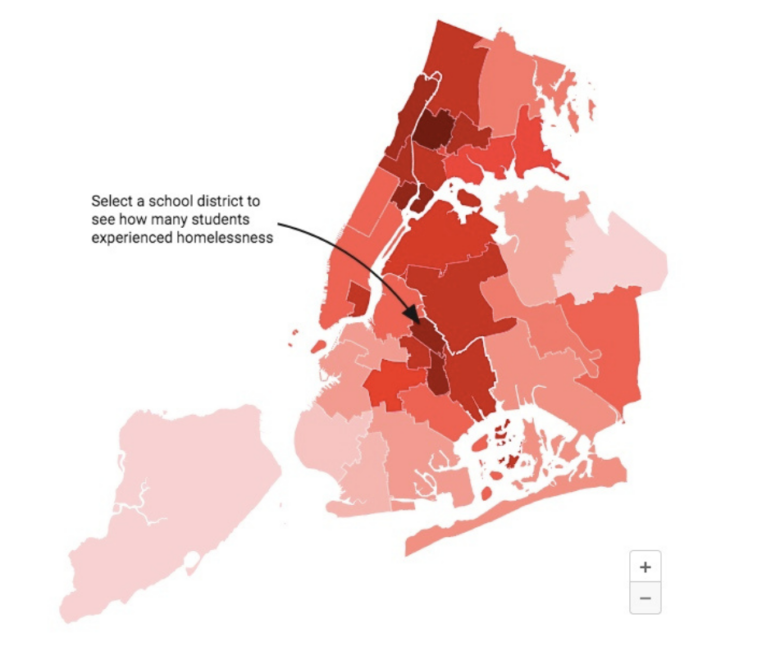Five New York City properties that Donald Trump has a stake in could collectively owe millions in penalties over the next decade if they fail to comply with the landmark building emissions law.

Michael Appleton/Mayoral Photography
Trump Tower, at 725 Fifth Ave., could owe nearly $58,000 a year in fines starting in 2030 under the city’s building emissions program if changes aren’t made, according to estimates by the Building Energy Exchange’s projected penalty calculator.When Donald Trump was still president, his real estate was deemed among the top properties contributing to climate change in the Big Apple, where buildings emit 70 percent of the city’s greenhouse gas emissions.
“Your polluting buildings are part of the problem. Cut your emissions or pay the price,” former Mayor Bill de Blasio said back in 2019.
Now, thanks to Local Law 97 (LL97), owners of properties larger than 25,000 square feet that pollute above certain limits will indeed have to pay the price as they begin facing fines next year.
Five New York City properties that now-candidate Trump has a stake in could collectively owe millions in penalties over the next decade, according to a penalty calculator created by the Building Energy Exchange with the city-backed Accelerator Program, which helps property owners comply with LL97 requirements.
The Trump Organization, which did not respond to a request for comment, boasts owning a large portfolio of high-end properties on its website. But a civil fraud lawsuit carried out by New York’s Attorney General (AG) earlier this year found Trump liable for conspiring to manipulate his net worth and revealed the actual value of the real estate he owns.
City Limits zeroed in on the five New York City properties outlined in the lawsuit and calculated how much they could owe in Local Law 97 fines using the penalty calculator. Trump would likely be responsible for paying the fine in two properties where he owns ground leases and would cover a share of the costs in the other three where he has ownership over parts of the property, according to lawyers who spoke with City Limits.
Trump’s properties and the 50,000 buildings citywide that are covered by the law could avoid fines if they make the energy efficiency upgrades needed to reduce their carbon footprint. That includes switching to LED lighting or switching out an HVAC system for one that uses up less energy.
But if they don’t follow through, the price tag on the penalty only gets steeper over time.
The law covers 60 different property types, from supermarkets to offices to multifamily buildings. The amount at which they are allowed to pollute becomes more stringent over five compliance periods, from 2024 through 2050.
One Trump-affiliated property, which spans several addresses from 4 to 10 East 57th St. and where Trump Organization rents out commercial space just around the corner from the iconic Trump Tower, is already above its 2024 cap and could start receiving fines of almost $92,000 starting next year.
Environmentalists say it’s time to reign in those emissions once and for all.
“Trump is [part of] that rich billionaire class of property owners that are cooking the planet and making the air quality worse. We should push for [these buildings] to be upgraded to cut back on that pollution,” said Pete Sikora, the climate and inequality campaigns director at New York Communities for Change.

Credit: Ed Reed/Mayoral Photography Office
Former Mayor Bill de Blasio holding a rally outside Trump Tower in 2017.Who will be picking up the tab?
Former President Trump owns a 30 percent stake in a gleaming skyscraper located at 1290 Avenue of the Americas. The Trump Organization’s website says the tower, which spans an entire block and includes a “lustrous all-white marble-enclosed lobby,” is “one of New York City’s most distinguished office buildings in midtown.”
But if the site doesn’t reduce its carbon footprint it could be fined over $835,000 a year between the 2030 and 2039 Local Law 97 compliance period, according to Building Energy Exchange’s calculator. And if it continues to pollute above its emissions cap, the penalty could shoot up to $1.3 million over the following five year stretch.
The projections for these fines are based on the most recent 2022 energy consumption data that owners of large buildings disclosed in 2023 under Local Law 84. It projects what properties could owe given that owners must pay $268 for every metric ton of carbon dioxide emitted above their limits.
The calculator, however, can’t tell what a building’s energy consumption will be in the future and makes an approximation for subsequent compliance periods “based on the average value for all covered buildings identified in the law,” according to the Building Energy Exchange. Still, the tool, which is recommended by one of the state’s climate authorities and the NYC Accelerator, the Mayor’s Office go-to agency for navigating LL97, is viewed as the best available for calculating potential fines.
But who exactly is responsible for paying the price when carbon emissions soar above LL97 thresholds?
Andrew Rudansky, a spokesperson for the Department of Buildings (DOB), told City Limits in an email that it’s up to the “the owners of the building” to comply with the law and pay any fines.
In the two properties included in the AG’s case where Trump is listed as owning a ground lease, he would be viewed as the owner and would therefore be responsible for covering any potential LL97 fines, lawyers who spoke with City Limits said.
“The whole point of a ground lease is to confer rights very similar to ownership rights [to the tenant]. So the ground lease lets the tenant step into the shoes of the owner,” said YuhTyng Patka, a partner at Adler & Stachenfeld LLP who has been working with clients on Local Law 97 since its inception.
Public documents reviewed by City Limits show that Trump owns ground leases at 40 Wall St., known as the Trump Building, and at 4 to 10 East 57th St., which is attached to the infamous Trump Tower that the former president once called home.
For the purposes of Local Law 97, Patka explains, Trump would be viewed as the owner of these buildings because although someone else owns the actual land, they leased it out to Trump for several decades to run the properties.
“The ground tenant is the one responsible for what’s happening with the property, [in this case], how much carbon it’s emitting. So if I’m the ground landlord I would say, ‘Hey, tenant, you are causing the emissions to exceed the LL97 [limits] therefore you’re responsible for the penalty that you’re generating,’” she added.
But there are three other properties listed in the AG’s case where Trump wouldn’t be as liable. In these cases, Trump either has a stake in the whole building, like he does in 1240 Avenue of the Americas, or he owns units and space within condominium buildings, which is the case for Trump Tower and Trump Park Avenue.
William McCracken, a partner at the law firm Moritt Hock & Hamroff LLP, says that in a condominium Trump would be “liable” to pay the percentage of interest he has in the common areas of the building.
“What happens with a condominium generally is that the condominium association gets the fine. The board then pays that fine and assesses it as a common charge to all the unit owners. Those unit owners then pay their percentage,” McCracken explained.
While lawyers are busy interpreting the law, they warn that some details on how the fines will play out are yet to be ironed out. The DOB released regulations in July of this year that answers a lot of these questions, but legal experts say hurdles they might not be prepared for might surface when fines actually start rolling in during the second compliance period in 2030.
For now, experts say only 5,000 buildings won’t meet their carbon emissions limits for the 2024 to 2029 compliance period, unless they make changes. And Trump’s building at 4 to 10 East 57th St. could be one of them.

Official White House Photo by Shealah Craighead
Former President Donald J. Trump and former Prime Minister Shinzo Abe of Japan in the Trump’s private residence at Trump Tower in 2018.What now?
Whether Trump will make the upgrades necessary to comply with the law moving forward remains to be seen. The Trump Organization, Trump’s presidential campaign and his legal counsel did not respond to requests for comment.
But one thing is certain: there is more pressure than ever to get responsible parties on board with reducing their emissions, as opposition against the law grows.
Environmental groups say legislation introduced earlier this year could threaten to gut the law, and they fear potential loopholes in the regulations could give landlords an opportunity to bypass compliance.
“There is clearly ongoing political backlash to try and weaken, get rid of, or postpone the law on many fronts right now and I expect that effort to continue particularly in 2030 when the fines start getting tougher to avoid,” McCracken pointed out.
Despite that, the DOB says it’s devoted to seeing the law through.
“This Administration is committed to fully enforcing our nation-leading climate law in a way that supports building owners who are making efforts to comply,” Rudansky from the DOB said in an email.
Not letting the law play out and fulfill the intended purpose of reducing the city’s carbon footprint, experts warn, will have massive consequences.
“Without Local Law 97 there is no way this city will reach its climate goals because 70 percent of all carbon emissions in New York City are tied up in buildings,” said John Mandyck, CEO of the decarbonization research hub Urban Green Council.
Mandyck points out that the law wasn’t put in place to charge landlords fines. The whole point is to get building owners on board with making the energy efficiency upgrades that are good for the planet.
“We need this law to be successful, to show the world that it can be done. And we need it to be successful so New York City can do its part to stem the impacts of climate change,” he added.
To reach the reporter behind this story, contact Mariana@citylimits.org. To reach the editor, contact Jeanmarie@citylimits.org
Want to republish this story? Find City Limits’ reprint policy here.








